Related Research Articles

Exhalation is the flow of the breath out of an organism. In animals, it is the movement of air from the lungs out of the airways, to the external environment during breathing. This happens due to elastic properties of the lungs, as well as the internal intercostal muscles which lower the rib cage and decrease thoracic volume. As the thoracic diaphragm relaxes during exhalation it causes the tissue it has depressed to rise superiorly and put pressure on the lungs to expel the air. During forced exhalation, as when blowing out a candle, expiratory muscles including the abdominal muscles and internal intercostal muscles generate abdominal and thoracic pressure, which forces air out of the lungs.

Spirometry is the most common of the pulmonary function tests (PFTs). It measures lung function, specifically the amount (volume) and/or speed (flow) of air that can be inhaled and exhaled. Spirometry is helpful in assessing breathing patterns that identify conditions such as asthma, pulmonary fibrosis, cystic fibrosis, and COPD. It is also helpful as part of a system of health surveillance, in which breathing patterns are measured over time.
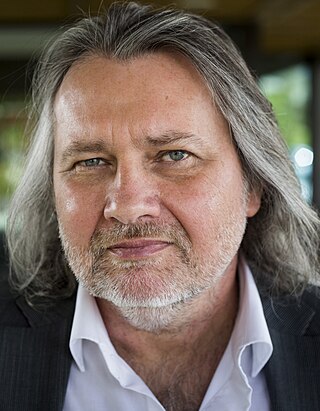
Peter Schwerdtfeger is a German scientist. He holds a chair in theoretical chemistry at Massey University in Auckland, New Zealand, serves as Director of the Centre for Theoretical Chemistry and Physics, is the Head of the New Zealand Institute for Advanced Study, and is a former president of the Alexander von Humboldt Foundation.

Barbara Ruth Holland is a New Zealand born Australian scientist. She is a Professor of mathematics and member of the Theoretical Phylogenetics Group at the School of Mathematics & Physics at the University of Tasmania. Holland is also a Chief Investigator at the ARC Centre of Excellence for Plant Success in Nature and Agriculture. She has made substantial contributions to the methods for reconstructing phylogenetic trees from DNA and protein sequence data. Holland has published over 50 journal articles, presented over 30 invited or keynote lectures, refereed five conference proceedings, 2 book chapters and 1 book review. She is a senior editor of the scientific journal Molecular Biology and Evolution.

Robert Dudley Jolly is a New Zealand veterinary academic, currently an emeritus professor at Massey University, specialising in animal pathology. Much of his research has been into animal models of human disease, including Batten's Disease and mannosidosis.

Charlotte Jean Macdonald is a New Zealand historian. After studying as an undergraduate at Massey University, she earned her PhD from University of Auckland and is now a professor at Victoria University of Wellington.

Gaven John MartinFRSNZFASLFAMS is a New Zealand mathematician. He is a Distinguished Professor of Mathematics at Massey University, the head of the New Zealand Institute for Advanced Study, the former president of the New Zealand Mathematical Society, and former editor-in-chief of the New Zealand Journal of Mathematics. He is a former Vice-President of the Royal Society of New Zealand [Mathematical, Physical Sciences Engineering and Technology. His research concerns quasiconformal mappings, regularity theory for partial differential equations, and connections between the theory of discrete groups and low-dimensional topology.
Hinke Maria Osinga is a Dutch mathematician and an expert in dynamical systems. She works as a professor of applied mathematics at the University of Auckland in New Zealand. As well as for her research, she is known as a creator of mathematical art.

Sir Thomas Neil Morris Waters was a New Zealand inorganic chemist and academic administrator who served as vice-chancellor of Massey University from 1983 to 1995. He is noted for establishing the university's Albany campus near Auckland in 1993.
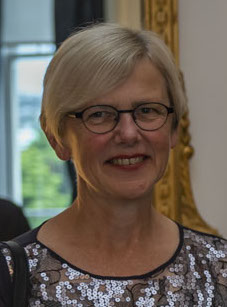
Gillian Christine Dobbie is a New Zealand computer scientist. She is a professor at the University of Auckland and the Director of the Auckland ICT Graduate School. She is also a visiting professor at National University of Singapore and on the advisory board of the Victoria University of Wellington.
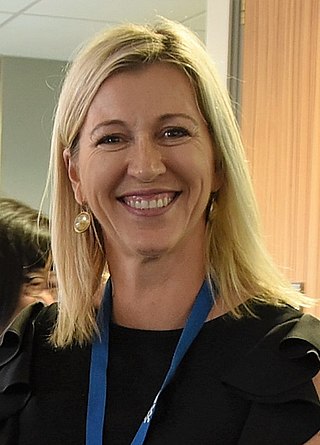
Merryn Tawhai is a New Zealand engineering scientist. She is a professor at the University of Auckland, director of the Auckland Bioengineering Institute, where she was a fellow from 2002, and a former director of MedTech CoRE. She is known for the development of mathematical models of the lungs that will help scientists understand differences between physiologically normal lungs and the pathological changes that might occur in a disease. She was inducted into the International Academy of Medical and Biological Engineering in June 2018. In November 2018, Tawhai was elected a Fellow of the Royal Society of New Zealand.
Marti J. Anderson is an American researcher based in New Zealand. Her ecological statistical works is interdisciplinary, from marine biology and ecology to mathematical and applied statistics. Her core areas of research and expertise are: community ecology, biodiversity, multivariate analysis, resampling methods, experimental designs, and statistical models of species abundances. She is a Distinguished Professor in the New Zealand Institute for Advanced Study at Massey University and also the Director of the New Zealand research and software-development company, PRIMER-e.

Dianne Heather Brunton is a New Zealand ecologist, and head of the Institute of Natural and Computational Sciences at Massey University. Her research area is the behaviour and cultural evolution of animal communication, especially bird song in southern hemisphere species such as the New Zealand bellbird.

Vivien Kirk is a New Zealand mathematician who studies dynamical systems. She is a professor of mathematics at the University of Auckland, where she also serves as associate dean, and was president of the New Zealand Mathematical Society for 2017–2019.
Tracey Slaughter is a New Zealand writer and poet.
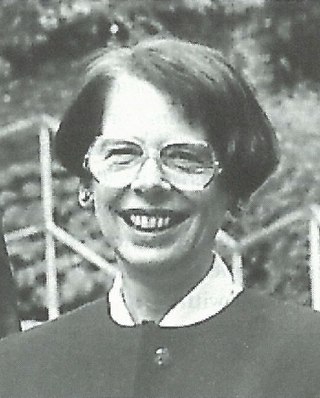
Joyce Mary Waters, Lady Waters is a New Zealand inorganic chemist and X-ray crystallographer, who is currently professor emeritus at Massey University. She was the second woman to receive a PhD in chemistry at the University of Auckland, and the first woman to serve as president of the New Zealand Institute of Chemistry.

Robert Iain McLachlan is a New Zealand mathematician and Distinguished Professor in the School of Fundamental Sciences, Massey University, New Zealand. His research in geometric integration encompasses both pure and applied mathematics, modelling the structure of systems such as liquids, climate cycles, and quantum mechanics. He is also writes for the public on the subject of climate change policy.

Giselle Margaret Byrnes is a New Zealand historian. She is the provost and assistant Vice-Chancellor of Massey University, New Zealand. Previous employment included the Waitangi Tribunal and as lecturer at Victoria University of Wellington.
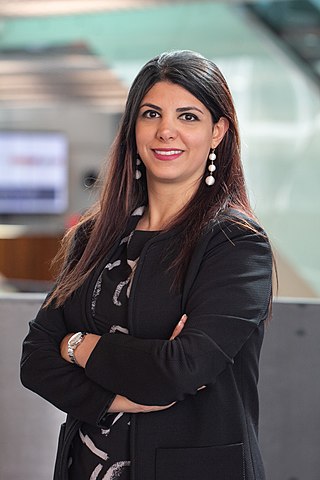
Mahsa Mohaghegh (McCauley) is an Iranian-born New Zealand computer engineer specialising in artificial intelligence and natural language processing. She is a professor of information technology and software engineering at Auckland University of Technology.

Aroha Gaylene Harris is a Māori academic. As of 2020, Harris is an associate professor at the University of Auckland, specialising in Māori histories of policy and community development. She is also a member of the Waitangi Tribunal.
References
- 1 2 3 Rankine, Jenny (June 2016), "Models for breathing", NZ Images, no. 14, p. 8
- 1 2 3 4 5 6 7 McKibbin, Robert (April 2019), "Profile" (PDF), Newsletter of the New Zealand Mathematical Society, no. 135, pp. 10–11
- 1 2 "Alona Ben-Tal", About The Author, SIAM News, Society for Industrial and Applied Mathematics , retrieved 2020-12-17
- 1 2 "Associate Professor Alona Ben-Tal", School of Natural and Computational Sciences staff, Massey University, retrieved 2020-12-17
- ↑ Alona Ben-Tal at the Mathematics Genealogy Project
- ↑ Ben-Tal, Alona (2001), A Study of Symmetric Forced Oscillators, ResearchSpace@Auckland, hdl:2292/2323, Wikidata Q111964159
- ↑ Ben-Tal, Alona (2001). A Study of Symmetric Forced Oscillators (Doctoral thesis). ResearchSpace@Auckland.
- ↑ NZMS Accreditation, New Zealand Mathematical Society, retrieved 2020-12-17